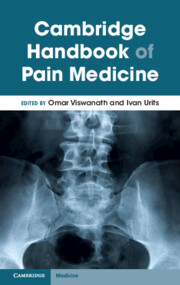Book contents
- Cambridge Handbook of Pain Medicine
- Cambridge Handbook of Pain Medicine
- Copyright page
- Contents
- Contributors
- Pain Handbook Introduction
- Part I Introduction to Pain: Pain Signaling Pathways
- Part II Common Categories of Pharmacologic Medications to Treat Chronic Pain
- Part III Chronic Pain Conditions Head and Neck
- Part IV Spine
- Part V Extremities
- Chapter 18 Carpal Tunnel Syndrome
- Chapter 19 Adhesive Capsulitis of the Shoulder
- Chapter 20 Thoracic Outlet Syndrome
- Chapter 21 Osteoarthritic Hip Pain
- Chapter 22 Osteoarthritic Knee Pain
- Chapter 23 Chronic Ankle and Foot Pain
- Chapter 24 Plantar Fasciitis
- Chapter 25 Phantom Limb Pain
- Part VI Misc
- Part VII Adjunctive Therapy
- Index
- References
Chapter 24 - Plantar Fasciitis
from Part V - Extremities
Published online by Cambridge University Press: 01 December 2023
- Cambridge Handbook of Pain Medicine
- Cambridge Handbook of Pain Medicine
- Copyright page
- Contents
- Contributors
- Pain Handbook Introduction
- Part I Introduction to Pain: Pain Signaling Pathways
- Part II Common Categories of Pharmacologic Medications to Treat Chronic Pain
- Part III Chronic Pain Conditions Head and Neck
- Part IV Spine
- Part V Extremities
- Chapter 18 Carpal Tunnel Syndrome
- Chapter 19 Adhesive Capsulitis of the Shoulder
- Chapter 20 Thoracic Outlet Syndrome
- Chapter 21 Osteoarthritic Hip Pain
- Chapter 22 Osteoarthritic Knee Pain
- Chapter 23 Chronic Ankle and Foot Pain
- Chapter 24 Plantar Fasciitis
- Chapter 25 Phantom Limb Pain
- Part VI Misc
- Part VII Adjunctive Therapy
- Index
- References
Summary
Plantar fasciitis (PF) is a common cause of chronic foot and heel pain in active and sedentary adults. It is present in approximately 0.85% of the population and is more common in the obese, women, and those aged 45?64 years. Point tenderness at the inferior calcaneus, radiation of pain to plantar fascia on dorsiflexion of ankle and extension of toes, and thickening of the plantar fascia on imaging are strong diagnostic indications of PF. Most cases of PF can be managed with conservative therapy, including weight loss, stretching, and foot strengthening, and NSAIDs LCI, PRP, and botulinum toxin-A injections at the plantar fascia are all effective in relief of symptoms and return of functionality in the foot. Treatments such as radiofrequency ablation of local nerves and ESWT are even superior to local injections and are effective in many patients refractory to all other treatment.
- Type
- Chapter
- Information
- Cambridge Handbook of Pain Medicine , pp. 194 - 204Publisher: Cambridge University PressPrint publication year: 2023

